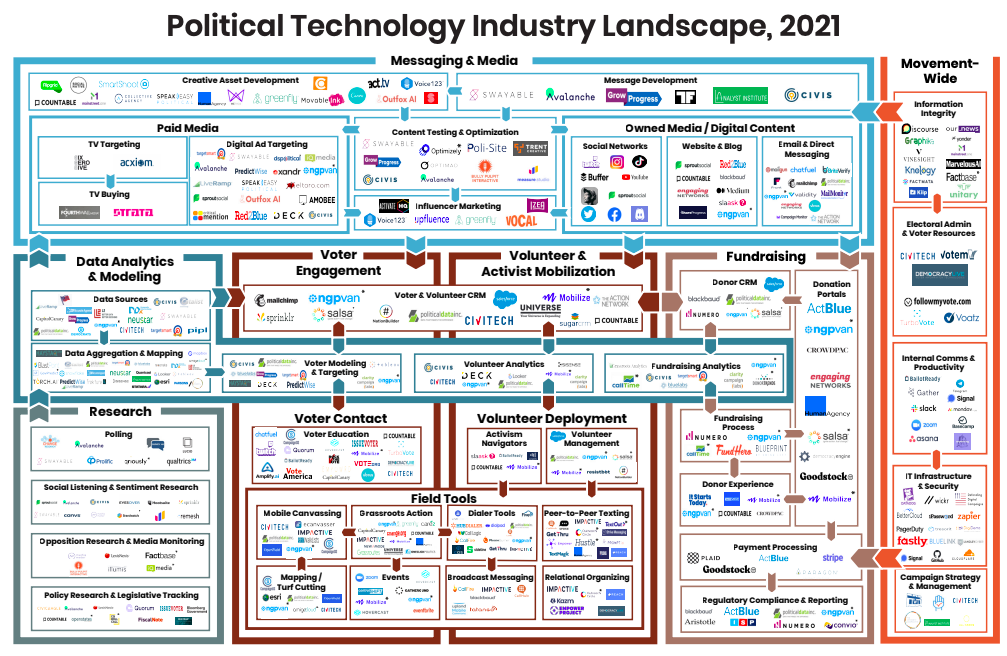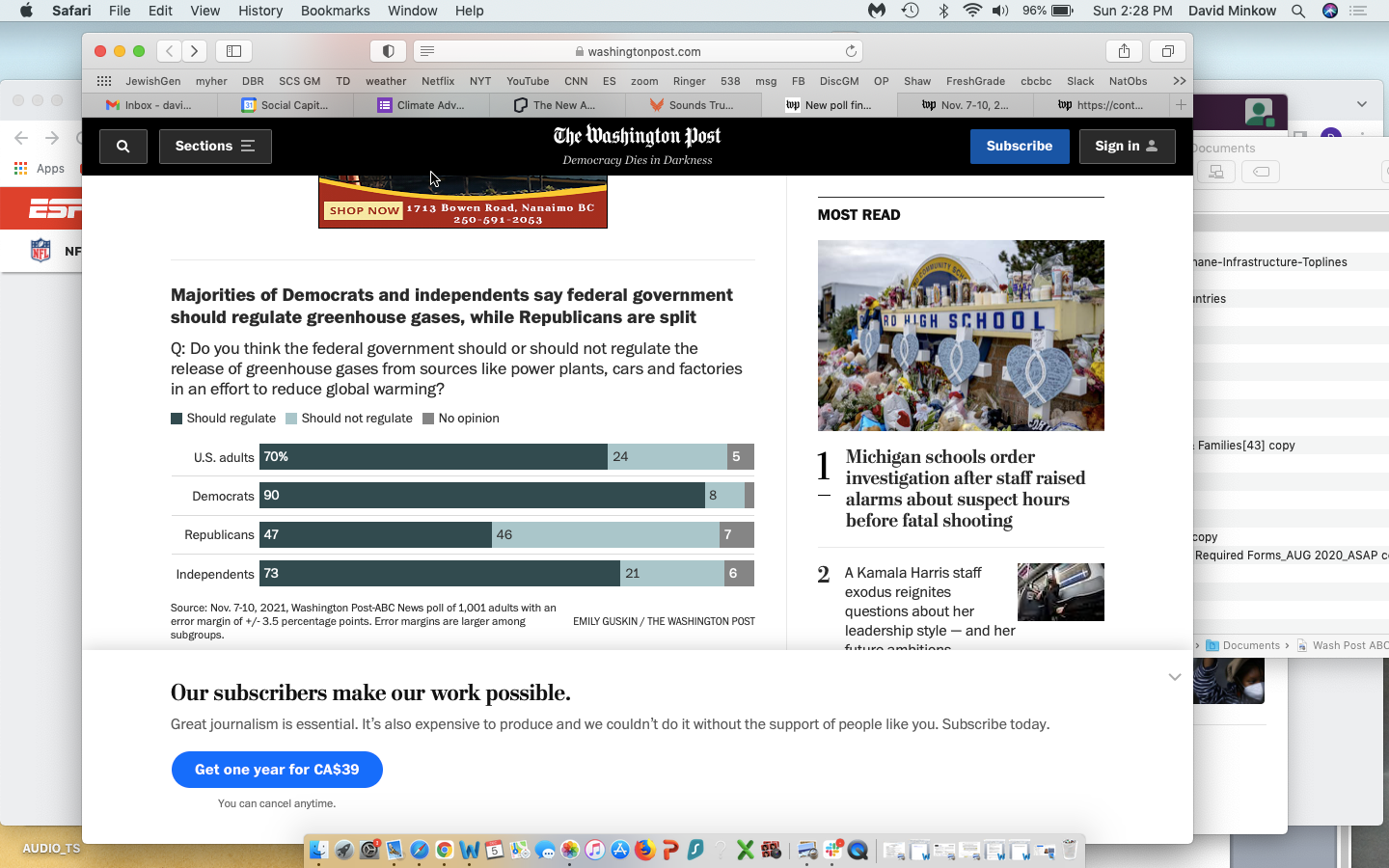Resources
Search below for resources covering the intersection of climate engagement, social science and data analytics.
RESULTS
Protest movements: How effective are they?
Most protest movements have little success in achieving their aims, or otherwise positive outcomes—but a small percentage of protest movements will achieve outcomes large enough to warrant funding a portfolio of social movement organizations. This resource may be useful for grantmakers and advocates who want to pursue the most effective ways to bring about change for a given issue, particularly on climate change or animal welfare. There is solid evidence that protests can cause small changes in public opinion on an issue (swaying about 2-5% of the population). There is some evidence—but less—that protest movement activity can bring about policy change.
Growing Voters: Building Institutions and Community Ecosystems for Equitable Electoral Participation
There are some key ways to improve on the current model for how to engage young people to vote. This report introduces and details a new framework for how institutions and communities can prepare young people—starting long before they turn 18—to become active and informed voters. There are profound inequities in access to civic learning and engagement opportunities for young people. Implementing a “growing voters” approach involves engaging potential (young) voters year-round, building culture of the importance of civic participation, contacting potential voters even before they turn 18, targeting young people who even haven’t voted before, and doing so everywhere (national and locally, not just in competitive electoral districts). This report describes these tactics in detail, for how to produce a long-term increase in young people voting.
Political Tech Landscape Report 2021
2021 saw significant activity across the political tech space. This report describes relevant developments and trends. Social media platforms imposed limitations on individual targeting for political ads, forcing campaigns to explore alternative influencer-focused messaging strategies. Given recent underperformance at the ballot box, stakeholders dedicated more resources to studying the rightward shift of the Latinx voter base. Headlined by the acquisition of NGP VAN’s parent company EveryAction, merger and acquisition activity notably increased, demonstrating the growth and maturation of the political tech market. A small number of campaigns began to accept cryptocurrency donations, responding to our nation’s growing interest in emerging Web3 technologies.
How broadcast TV news covered environmental justice in 2021
Broadcast TV news mentioned a “socially marginalized community” in just 12% of its segments on environmental impacts or regulations in 2021. CBS aired the most environmental justice segments (13), followed by NBC (4), and ABC (2). The majority of environmental justice segments focused on government action (14) and the health impacts of pollution or chemical waste (9). National TV news shows missed key opportunities to apply an environmental justice lens to important national stories such as the 2021 Texas winter storm, a toxic wastewater leak in Florida, and the Colonial pipeline hack. Even segments about obvious environmental justice stories, such as the lead water crisis in Benton Harbor, Michigan, were mostly shallow and lacked important context.
Best of 2021
The Forge—an online magazine for movement organizers and strategists—published many articles during 2021 that are useful for folks organizing across issues. “Building Power Through Policy” argues how the left can better utilize “policy feedback” in its political strategies. “Governing Together: Layers and Lessons”, an article series, catalogues the complementary roles of electoral strategies, policy priorities, governing tactics, and more. “The One-on-One” lays out the necessary ingredients for a successful one-on-one organizing conversation. “Here We Go Again: Philanthropy and Movement Capture” reminds contemporary movements about the risks of elite donor influence on grassroots power. This 2021 review includes many other articles about organizing, campaigns, policy, labor, police, and more.
The strong winds of climate change have failed to move the opinions of many Americans
Make clear the urgency of responding to climate change. According to this poll, only 45 percent of Americans view global warming as an urgent problem requiring immediate action. The poll also finds that while perceptions about the threat of climate change haven’t changed much, the partisan divide on the issue has widened in recent years.
Youth Autonomous Organizing
A collection of interviews, articles, short essays and art - a zine made by youth and community organizers in the Greater Southwest.
GenGND Conversation with Kaniela Ing
Hawaiian organizer and strategist Kaniela Ing describes his theory of politics in this podcast episode. Kaniela is the Climate Justice Director with People’s Action, former state legislator, and former candidate for U.S. Congress. He argues that building power only happens through organizing, and insider lobbying only works to “wield” power, even though traditional advocacy organizations often view power only through lobbying. Kaniela says that growing up in a working-class, conservative household showed him that progressive organizers need to be understanding and empathetic and can win working-class Republicans over to progressive causes. He also describes (harmful) capitalist, colonial influences on Hawaiian local economies.
A Practitioner's Guide for Measuring Movements
In this blog post from May 2021, Brittany Bennett, the Data Director for Sunrise Movement, breaks down her five metrics for measuring people power in a movement. Using a table of all a supporter's actions over the course of their engagement with Sunrise in chronological order - the "one table to rule them all - Ms. Bennett identifies five metrics that offer insight into the efficacy of an organization's organizing and campaign work. She delineates each of them links them back to the table, and show how they can be used to align an organization's programs in order to maximize its organizing.
Automating the hard stuff (and impress your organizers along the way)
In this blog post from January 2021, Brittany Bennett, the Data Director for Sunrise Movement, argues that in order to become a data-driven organization, the people in charge of the data and data management need to be oriented towards serving the organizers as their first priority. "[W]when you cannot deliver accurate results quick to organizers, you lose their buy in to your system. And when your organizers do not use your systems, your organizations becomes less data driven."
Pagination
- Previous page
- Page 2
- Next page





